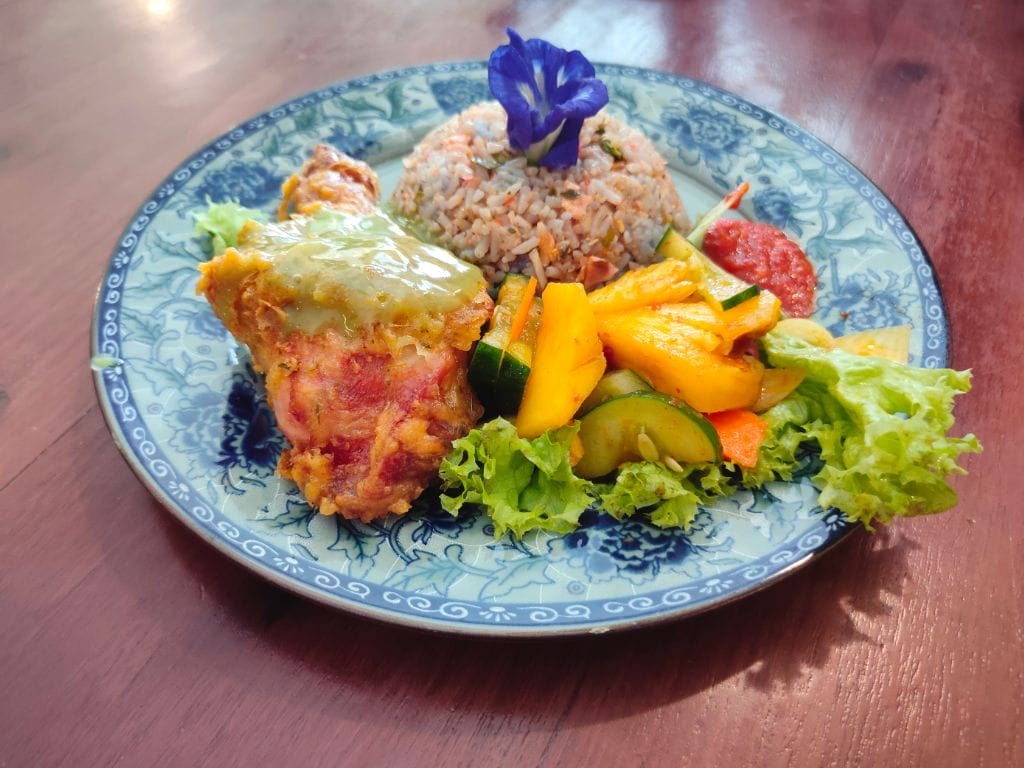10 Key Ingredients in Singapore Peranakan Cooking
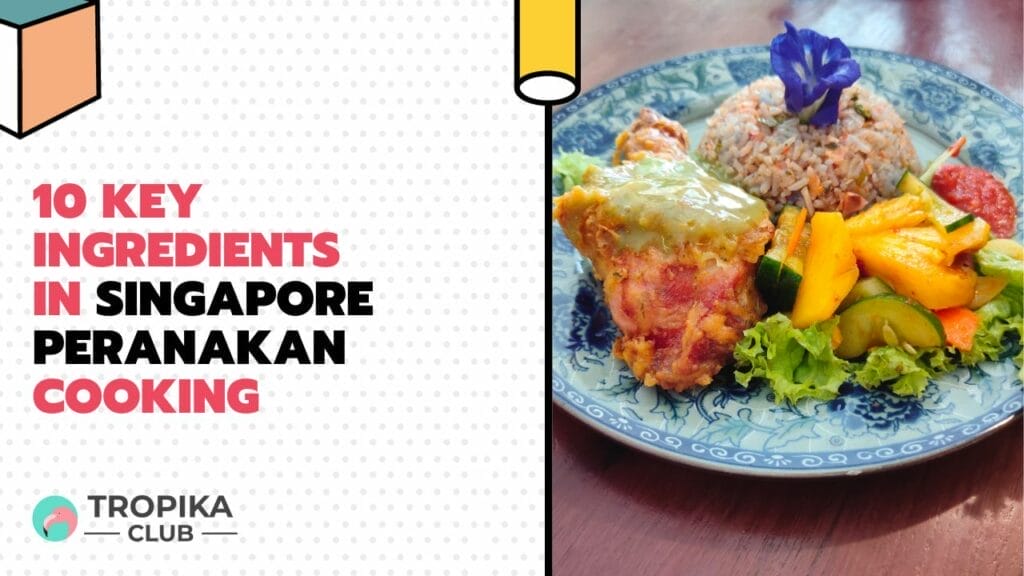
No Time to Read? Here’s a Snappy Summary of This Article
- Heritage Blend: Peranakan cuisine is a delectable fusion of Chinese, Malay, and Indonesian flavors, a culinary heritage treasure.
- Complex Spice Palette: Spice blends like rempah and laksa paste add depth and vibrancy to Peranakan dishes.
- Rich Coconut Influence: Creamy coconut milk and coconut sugar are integral ingredients, lending a sweet, savory balance.
- Pungent Belacan: Fermented shrimp paste, belacan, provides the umami punch and unique aroma to many dishes.
- Aromatic Herb Galore: Fresh herbs like lemongrass, turmeric leaves, and kaffir lime leaves infuse dishes with fragrant zest.
- Tangy Tamarind Twist: Tamarind paste imparts a delightful tanginess, adding a refreshing note to Peranakan cuisine.
Table of Contents
- No Time to Read? Here’s a Snappy Summary of This Article
- 1. Belacan (Shrimp Paste)
- 2. Tamarind (Asam)
- 3. Galangal
- 4. Kaffir Lime Leaves
- 5. Candlenuts
- 6. Lemongrass
- 7. Coconut Milk
- 8. Turmeric
- 9. Bird’s Eye Chilli (Cili Padi)
- 10. Fermented Soy Bean (Tauco)
- Meanwhile, Check Out Tropika Club’s Ecosystem of Websites
Introduction
Singapore, a melting pot of cultures, offers a culinary scene that’s as diverse as its population. One of the most intriguing aspects of Singaporean cuisine is undoubtedly Peranakan cooking. A blend of Chinese, Malay, and Indonesian influences, Peranakan food is a symphony of flavours that dances on the palate. In this article, we’ll take you on a culinary journey to explore the 10 key ingredients that make Singapore Peranakan cuisine a gastronomic treasure.
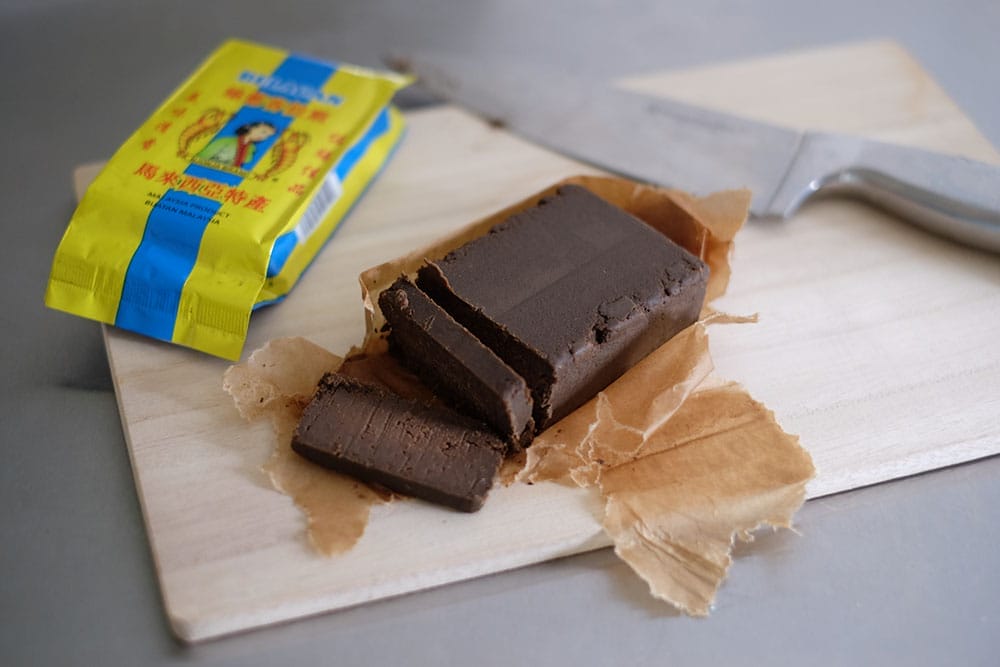
1. Belacan (Shrimp Paste)
Belacan is the soul of many Peranakan dishes. This pungent shrimp paste is made from fermented ground shrimp mixed with salt. It’s sun-dried and cut into blocks for use. While the smell may be strong, the flavour it imparts is unparalleled. It’s a cornerstone in dishes like Sambal Belacan and Ayam Buah Keluak. A little goes a long way, and it’s this ingredient that gives Peranakan cuisine its distinctive umami kick.
:max_bytes(150000):strip_icc()/GettyImages-1147545054-2000-cf62d6b8188846518193157fba8449be.jpg)
2. Tamarind (Asam)
Tamarind, or Asam, is another essential ingredient that lends a tangy, sour note to Peranakan dishes. It’s often used in Asam Pedas, a spicy and sour fish stew. The tamarind pulp is soaked in water to extract its juice, which is then added to various dishes to achieve that signature tang. It’s a flavour that’s deeply embedded in the culinary DNA of Singapore’s Peranakan community.
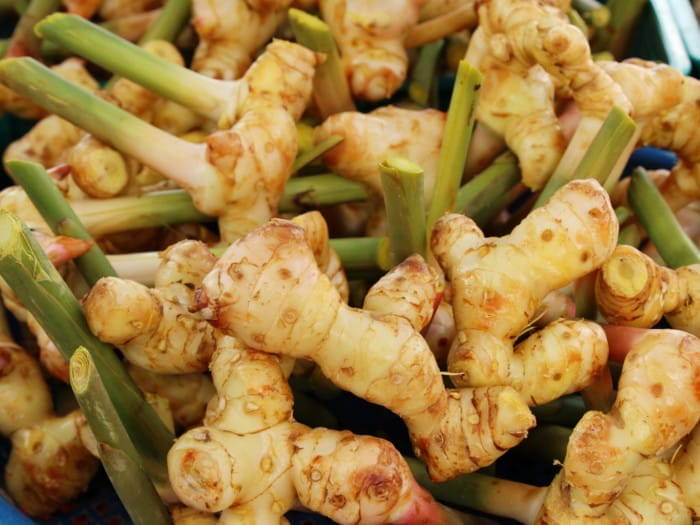
3. Galangal
Galangal is a rhizome similar to ginger but with a sharper, more citrusy flavour. It’s a key ingredient in Laksa, a spicy noodle soup that’s a staple in Singapore. Galangal adds a layer of complexity to the dish, elevating it from good to unforgettable. It’s often used in combination with other spices to create a rich, aromatic base for various Peranakan recipes.
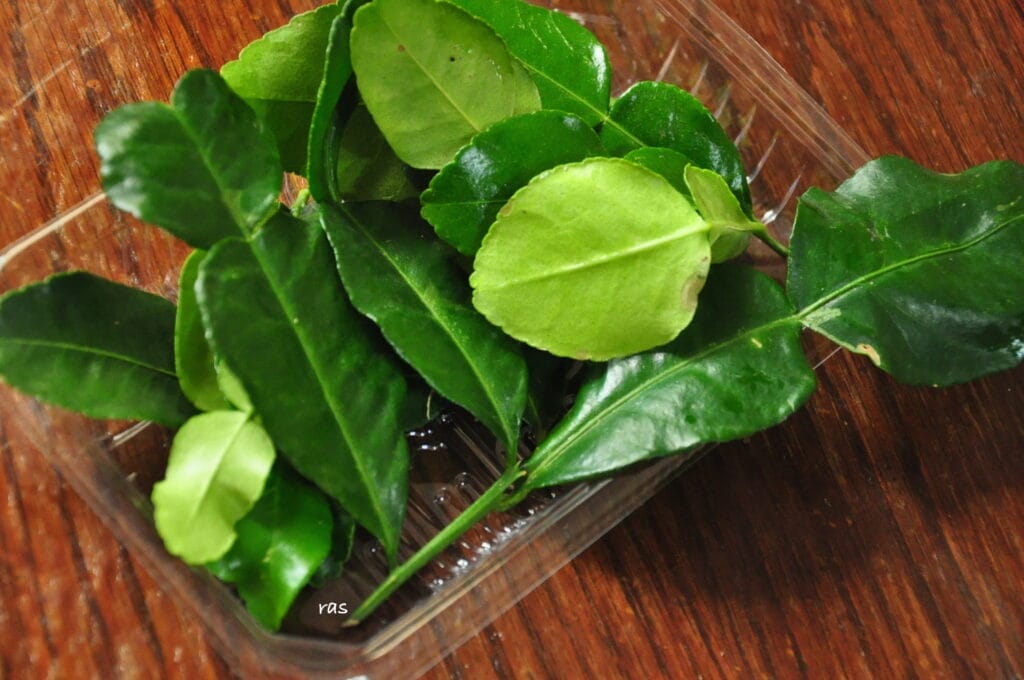
4. Kaffir Lime Leaves
The fragrance of Kaffir lime leaves is unmistakable and adds an aromatic zest to Peranakan dishes. These leaves are often used in curries and soups, imparting a citrusy aroma that’s both refreshing and appetizing. They’re usually torn into smaller pieces or finely shredded to allow their oils to infuse the dish. It’s this aromatic quality that makes Kaffir lime leaves a must-have in any Peranakan kitchen.
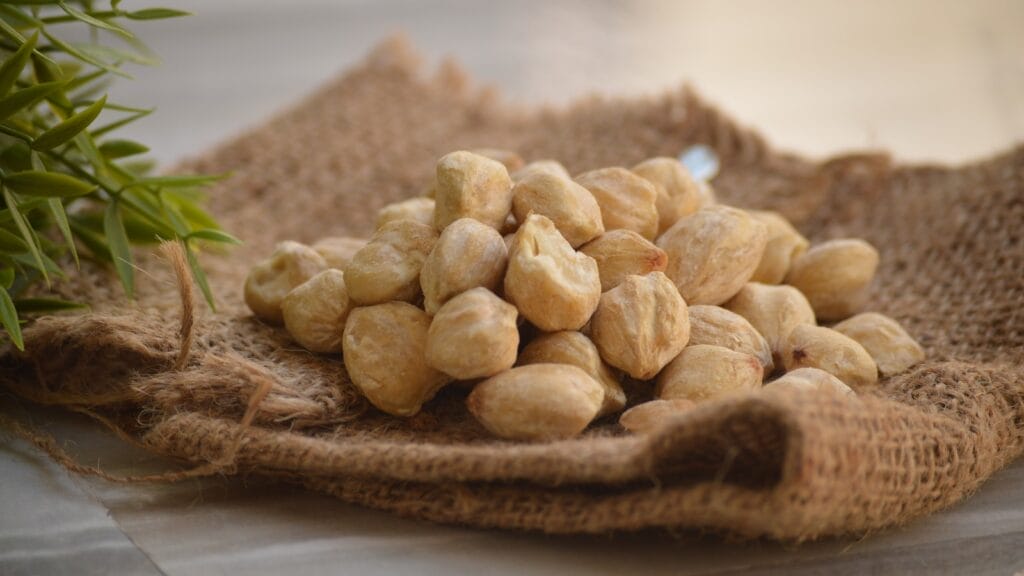
5. Candlenuts
Candlenuts serve as a thickening agent in many Peranakan dishes. These nuts are ground into a paste and added to curries and stews, giving them a creamy texture. While they look similar to macadamia nuts, candlenuts are toxic when raw and must be cooked. They’re a staple in dishes like Ayam Buah Keluak and Beef Rendang, contributing to the dish’s rich consistency.
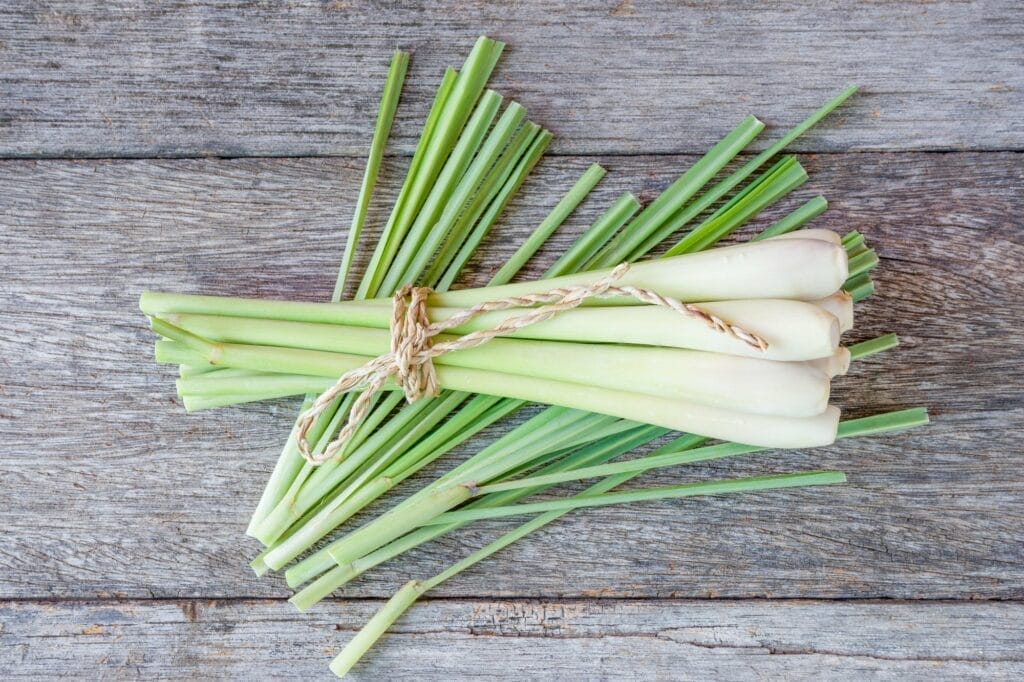
6. Lemongrass
Lemongrass is another aromatic herb that’s widely used in Peranakan cooking. Its citrusy flavour complements a variety of dishes, from curries to soups. It’s usually crushed to release its oils and then added to the dish, either whole or finely chopped. Lemongrass not only adds flavour but also has medicinal properties, making it a dual-purpose ingredient in Peranakan cuisine.
_
Read Also:
Top Best 18 Peranakan Restaurants in Singapore
_
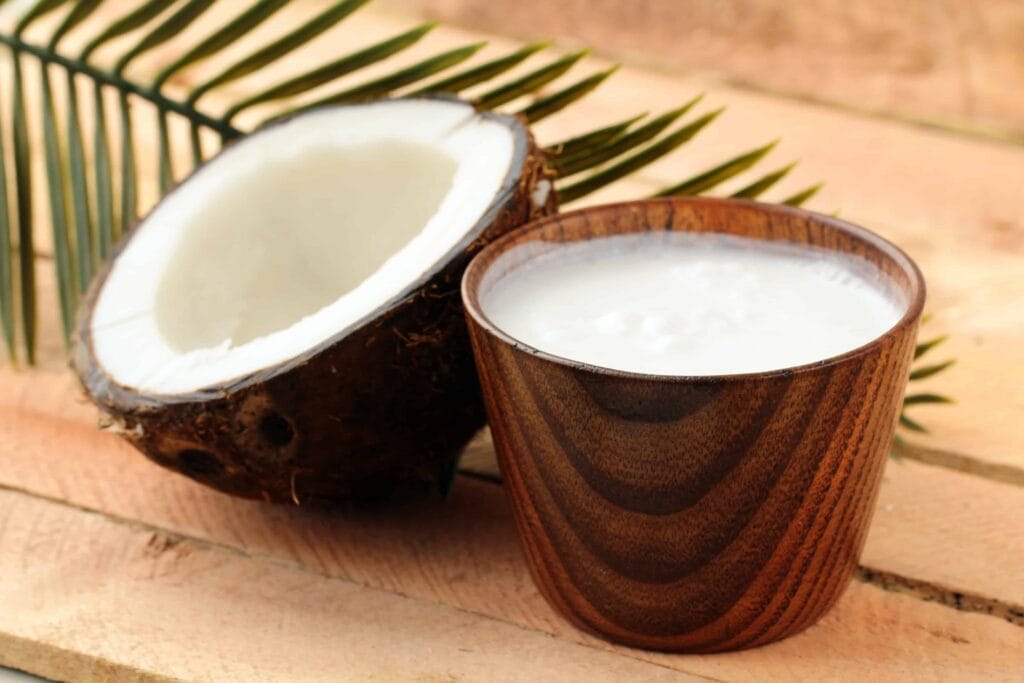
7. Coconut Milk
Coconut milk is the creamy elixir that gives many Peranakan dishes their luxurious texture. It’s used in desserts like Ondeh-Ondeh and mains like Laksa. The milk is extracted from grated coconut flesh and adds a rich, velvety touch to dishes. It balances out the spicy and sour elements, making it an indispensable part of the Peranakan culinary palette.

8. Turmeric
Turmeric is more than just a vibrant yellow spice; it’s a flavour powerhouse. It’s used both fresh and dried in Peranakan cooking. Turmeric adds an earthy, slightly bitter taste to dishes and is often used in spice pastes and marinades. Its anti-inflammatory properties are an added bonus, making it a spice that’s as healthy as it is delicious.
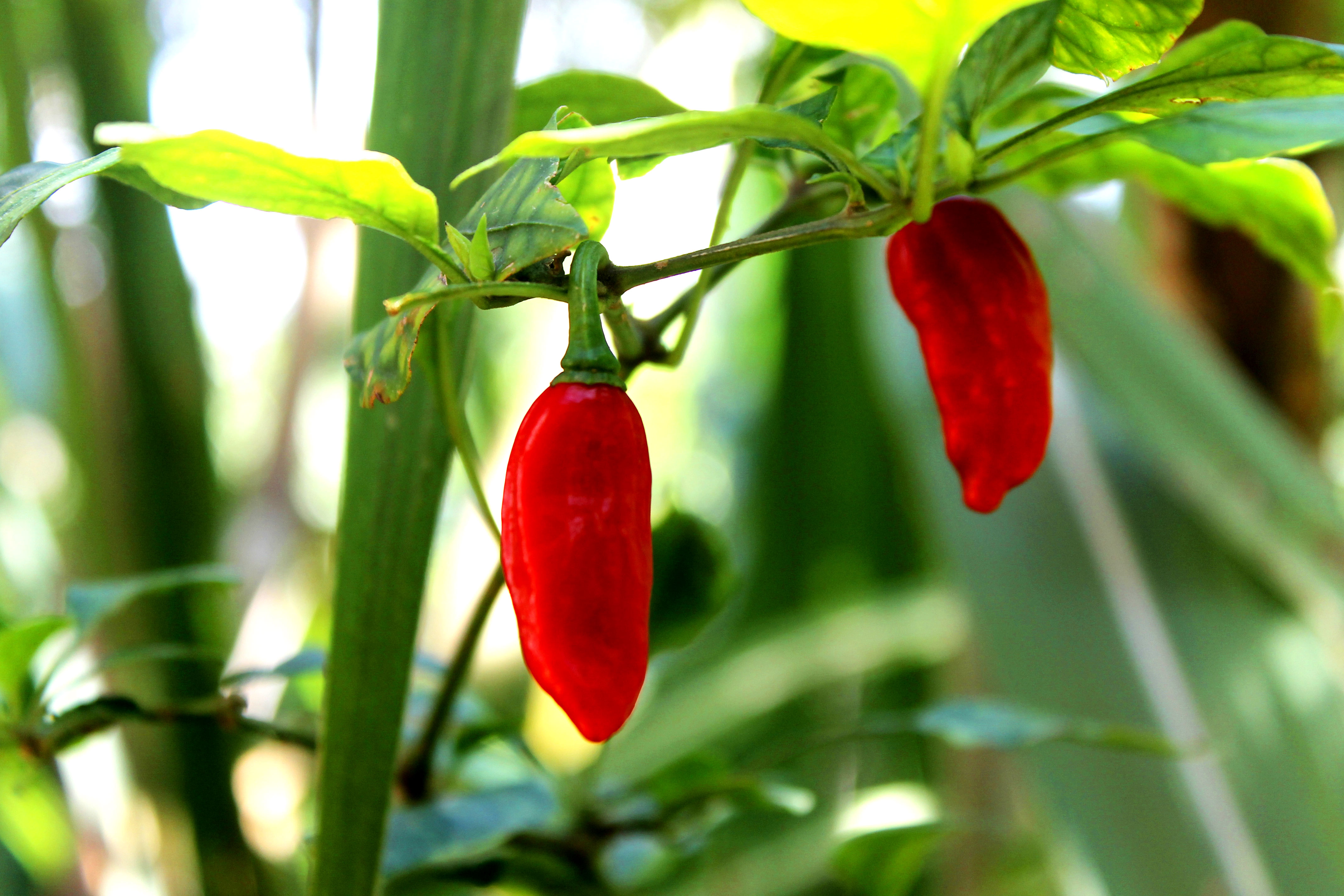
9. Bird’s Eye Chilli (Cili Padi)
No Peranakan dish is complete without a kick of spice, and that’s where Bird’s Eye Chilli, or Cili Padi, comes in. These tiny chillies pack a punch and are used in sambals, relishes, and as garnishes. They’re a key ingredient in dishes like Sambal Udang (Prawn Sambal), adding a fiery element that’s quintessentially Peranakan.

10. Fermented Soy Bean (Tauco)
Last but not least, fermented soybean or Tauco is used to add a salty, umami flavour to Peranakan dishes. It’s often used in stir-fries and stews, and its salty tang balances out the sweet and spicy elements in the dish. It’s a lesser-known but equally important ingredient that rounds out the complex flavours of Peranakan cuisine.
Conclusion
Peranakan cuisine is a culinary tradition that’s as rich and diverse as the culture it comes from. These 10 key ingredients are the building blocks that make this cuisine a beloved part of Singapore’s gastronomic landscape. Each ingredient brings its own unique flavour, creating a harmonious blend that’s distinctly Peranakan. So the next time you savour a Peranakan dish, you’ll appreciate the intricate tapestry of ingredients that make it a true Singaporean treasure.

Frequently Asked Questions (FAQ)
Q: What are the essential Peranakan ingredients?
A: Peranakan cuisine relies on key elements like rempah, belacan, coconut milk, tamarind, and aromatic herbs.
Q: Where can I find Peranakan ingredients in Singapore?
A: You can purchase Peranakan ingredients at local markets, specialty stores, and some online platforms.
Q: Can I substitute ingredients in Peranakan recipes?
A: Yes, you can substitute certain ingredients to accommodate dietary preferences or restrictions without compromising the dish’s essence.
Q: What dishes can I make with these ingredients?
A: You can create iconic Peranakan dishes like Laksa, Ayam Buah Keluak, and Nyonya Rendang using these ingredients.
Q: How do I use belacan in cooking?
A: Belacan is typically toasted or sautéed to release its rich umami flavor before incorporating it into recipes.
Q: What’s the significance of Peranakan cuisine in Singapore’s culinary heritage?
A: Peranakan cuisine reflects Singapore’s rich cultural history and offers a unique blend of flavors influenced by the region’s diverse heritage.

Have an Article to Suggest?
Tropika Club is always looking for new and exciting content to feature in their magazine and they value the input of our readers. If you have any noteworthy content or articles that you believe would be a great addition to Tropika Club’s magazine, we are open to suggestions and encourage you to reach out to us via email at [email protected]. By doing so, Tropika Club values your expertise and knowledge in the matter and appreciates your willingness to help. We will review your recommendations and update our list accordingly
Meanwhile, Check Out Tropika Club’s Ecosystem of Websites
Tropika Club Magazine – Tropika Club Magazine is a Singapore-based publication that features articles on a wide range of topics with a focus on local businesses and content for the region. The magazine emphasizes supporting local businesses through its #SupportLocal initiative, which includes coverage of everything from neighborhood hawker stalls to aesthetic clinics in town. In addition to highlighting local businesses, Tropika Club Magazine also covers a variety of local content, including beauty, lifestyle, places, eats, and what’s on in Singapore and the Asia Pacific region.



